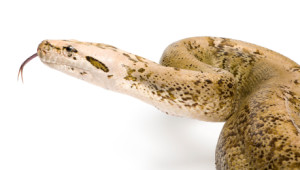 Texas is known for having some pretty destructive pests, from crazy ants to cockroaches, but these local bugs can’t compete with the problems worldwide. Below are 10 of the strangest and worst invasive species of insects, rodents, amphibians, and even plants found worldwide:
Texas is known for having some pretty destructive pests, from crazy ants to cockroaches, but these local bugs can’t compete with the problems worldwide. Below are 10 of the strangest and worst invasive species of insects, rodents, amphibians, and even plants found worldwide:
1. The Asian Tiger Mosquito. Originating in Asia, this black-and-white striped mosquito is now one of the most widespread animal species on the planet. In just two decades, it’s spread to 28 separate countries. Like other mosquitoes, it can carry West Nile virus and other blood-borne diseases.
2. The Cotton Whitefly. These tiny bugs measure just a millimeter in length and don’t seem threatening. However, they are devastating to plant life, carrying up to 100 different plant viruses and feasting on 900 species of plants. These bugs exist in every continent except Antarctica.
3. The Snakehead Fish. This fearsome fish has been destroying local ecosystems in several countries, including the U.S., thanks to its aggressive nature and rapid reproductive cycle. These fish can even migrate across the land for up to four days, enabling them to travel to new habitats.
4. The Asian Longhorned Beetle. Originating in Japan, these beetles can be devastating to trees. Their larvae tunnel between the bark and wood of the trunk, and large numbers of larvae will destroy the tree. The only way to clear the infestation is to cut down and burn the tree, making an infestation a death sentence for the tree in question.
5. Burmese Pythons. These giant, exotic snakes are popular pets, which is how they accidentally set loose in Florida, where they now thrive. Unfortunately for the local ecosystem, they are very efficient predators, and these pythons have been destroying endangered local wildlife like birds and alligators.
6. Cane Toads. These giant toads were introduced to Australia and the Caribbean to eat pests in sugar cane fields. Unfortunately, these aggressive predators can eat everything else that comes their way, making them one of the worst invasive species in the world.
7. Kudzu. This Japanese vine was initially introduced to the U.S. to retain loose soil and has since completely taken over. The plant proliferates, gaining about a foot per day in length, and it can quickly suffocate all other plants in the area.
8. Zebra Mussels. These mollusks likely arrived on the hull of European ships. Still, they have spread throughout the Great Lakes and other bodies of water in the U.S. They have no natural predators and tend to clog pipes and water treatment facilities.
9. Crazy Ants. Originating in South America, these aggressive swarming ants are swiftly spreading throughout the U.S. Much harder than other ant species; these ants are particularly troubling because they tend to squeeze into the tight cracks of electronics, where they can lie unnoticed.
10. Bed Bugs. At one point in time, these blood-sucking bugs had been eradicated from the U.S. years ago thanks to widespread pesticide use. However, international travelers recently re-introduced them from other countries, and the current infestation is even tougher to battle.
Houston may not have all these threats, but it’s still home to many unwanted pests. If you need help with pest control in Houston, contact us today for a free quote. We’d be happy to help you get rid of unwelcome invaders.